
|
CARDIOLOGY ONLINE NEWS |
 |
| 18th WORLD CONGRESS ON HEART DISEASE |
|
|
|
PROTEIN TRANSDUCTION DOMAINS; TARGETED VS. NON-TARGETED TISSUE DELIVERY

Maliha Zahid, M.D., University of Pittsburgh, Pittsburgh, PA, USA
The ability of certain proteins to cross cell membrane barriers was a chance finding reported over 20 years ago. This ability, also termed protein transduction, is localized to 6-30, basic, cationic peptide motifs, known as protein transduction domains (PTDs). MORE» |
OMEGA-3 SUPPLEMENTATION IMPROVES ARTERIAL STIFFNESS AND BIOMARKERS OF CV RISK IN LATINO AND WHITE PATIENTS WITH HYPERTENSION SERVED BY A SAFETY-NET HEALTHCARE SYSTEM

Carlin S. Long, M.D., University of Colorado Health Sciences Center and Denver Health Medical Center, Denver, CO, USA
We previously reported on a cross sectional study of Latino and White hypertension patients in a safety-net healthcare system in which Framingham risk factors, markers of inflammation (hsCRP, LPpLA2), arterial stiffness (Pulse wave velocity, augmentation index, and central aortic pressure), and endothelial function (brachial artery flow-mediated dilatation) were measured. MORE» |
THE EVOLUTION OF THE PACING SITE: PAST, PRESENT AND FUTURE

Yasushi Oginosawa, M.D., University of Occupational and Environmental Health, Yahatanishi, Kitakyushu, Japan
As cardiac pacing system for bradyarrhythmias has been developed in clinical practice over half century, the preferential pacing site has been also evolved.[PAST] In the early stage, the object of the pacing was only maintenance of heart rate and pacing lead has been implanted to right atrial appendage and/or right ventricular apex for easiness in terms of implantation and the stability even using conventional passive fixation lead. MORE» |
PROTECTIVE EFFECT OF TELMISARTAN AGAINST ENDOTHELIAL DYSFUNCTION AFTER CORONARY DRUG-ELUTING STENT IMPLANTATION IN HYPERTENSIVE PATIENTS
 Mitsuyasu Terashima, M.D., Toyohashi, Japan Mitsuyasu Terashima, M.D., Toyohashi, Japan
Objectives: The aim of this prospective, randomized study was to evaluate the effects of telmisartan on endothelial function after coronary drug-eluting stent (DES) implantation in hypertensive patients, compared to a calcium channel blocker, amlodipine. MORE» |
HUMAN ENTEROVIRUS PERSISTENCE: POTENTIAL FOR EXACERBATION OF MYOCARDITIS

Nora M. Chapman, M.D., University of Nebraska Medical Center, Omaha, NE, USA
Human enteroviruses like the group B coxsackieviruses (CVB) are known to cause human inflammatory cardiomyopathies but until recently, the CVB were thought to be acute infections, rapidly cleared by the host's immune system. We discovered that CVB can persist for weeks to months following either experimental inoculation (in cell cultures or mice) or natural infection (humans) through a mechanism that involves the loss of the 5' terminal genomic sequence. MORE» |
NEUTROPHILS IN ACUTE CORONARY ARTERY DISEASE

Janos G. Filep, M.D., Maisonneuve-Rosemont Hospital, Montreal, Quebec, Canada
Neutrophil granulocytes are present in atherosclerotic lesions and contribute to inflammatory tissue injury underlying all phases of atherosclerosis from nascent lesions to culmination in acute coronary artery disease (CAD). Acute CAD is characterized by widespread neutrophil accumulation, neutrophil infiltration of culprit lesions and prolonged neutrophil lifespan. MORE» |
CRYPTOGENIC STROKE - COULD LONG TERM CARDIAC MONITORING UNCOVER THE CAUSE 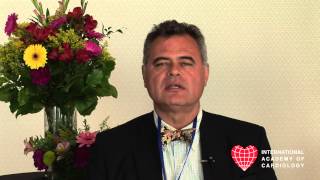
J. Rod Gimbel, M.D., Knoxville, TN, USA
"Cryptogenic Stroke" is defined as an ischemic stroke that is not attributable to a cardioembolic source or large or small vessel disease whose cause remains undetermined after an extensive cardiovascular and hematologic search for the cause. Approximately, 20-25 % of ischemic strokes are "cryptogenic" with some due to unrecognized or undetected atrial fibrillation. MORE» |
MACROPHAGES TRANSMIT POTENT PROANGIOGENIC EFFECTS OF oxLDL IN VITRO AND IN VIVO INVOLVING HIF-1a ACTIVATION: A NOVEL ASPECT OF ANGIOGENESIS IN ATHEROSCLEROSIS Randolph Hutter, M.D., The Cardiovascular Institute, Mount Sinai School of Medicine, New York, NY, USA Randolph Hutter, M.D., The Cardiovascular Institute, Mount Sinai School of Medicine, New York, NY, USA
Background: Neovascularization has been linked to the progression and vulnerability of atherosclerotic lesions. Angiogenesis is increased in lipid-rich plaque. Hypoxia-inducible factor alpha (HIF-1a) is a key transcriptional regulator responding to hypoxia and activating genes, which promote angiogenesis, among them vascular endothelial growth factor (VEGF). MORE» |
IMPACT OF LIFE STYLE MODIFICATIONS, ANTIANGINALS, ANTIPLATELETS AND LIPID MODIFYING DRUGS AND OF CORONARY ARTERY REVASCULARIZATION ON MORTALITY AND MORBIDITY IN PATIENTS WITH ISCHEMIC HEART DISEASE: TRUTH AND FALSE NOTIONS 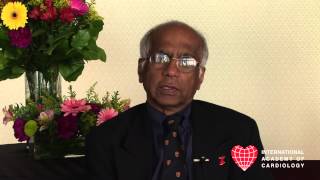
Udho Thadani, M.D., University of Oklahoma HSC and VA Medical Center, Oklahoma City, OK, USA
Stable ischemic heart disease (SIHD) is a new term in vogue; and one must address not only the impact of treatment on symptoms and quality of life but also on mortality and other serious adverse cardiovascular outcomes (SACO) such as myocardial infarction (MI) and stroke. Lifestyle alterations (abstinence of smoking, regular exercise and lipid modifying treatment with statins, reduce the incidence of SACO. MORE» |
INTEGRATIVE THERAPY IN CARDIOVASCULAR DISEASE: SAVIOR OR SHAM?

Saul Schaefer, M.D., University of California, Davis, CA, USA
While physicians generally treat cardiovascular disease and risk factors with conventional medications such as statins and beta blockers, patients often use complementary or integrative therapy such as fish oil, vitamins, enzymes, and chelation therapy. This $45 billion industry is based on the belief that non-allopathic therapies can lower cardiovascular risk in addition to, or in lieu of, conventional therapy. The NIH Center for Complementary and Alternative Medicine supports therapy "for which there is some high-quality scientific evidence of safety and effectiveness"; MORE» |
MEDICAL RISK FACTOR CONTROL IN LARGE TRIALS OF DIABETIC PATIENTS UNDERGOING CORONARY REVASCULARIZATION 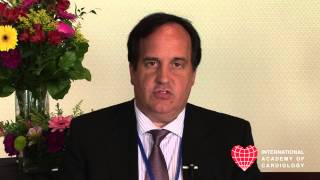
Michael E. Farkouh, M.D., University of Toronto, Toronto, Ontario, Canada
Over the past 2 decades, significant progress has been made in the medical management for patients with coronary artery disease (CAD). Despite guidelines that recommend specific targets for control of risk factors, specifically blood pressure targets in hypertensive patients, low-density lipoprotein (LDL) for those with hyperlipidemia, and glycemic control (HbA1C) in diabetic patients, current large cohort studies demonstrate that a significant proportion of patients do not achieve target risk factor control. MORE» |
CHANGES IN HEART ALLOCATION FOR TRANSPLANTATION IN THE US AND WORLDWIDE: OPTIONS FOR A BETTER SOLUTION

Dan M. Meyer, M.D., University of Texas Southwestern, Med Center at Dallas, Dallas, TX, USA
Objectives: To inform the transplant community of potential modifications in the heart allocation system.
Background: Efforts to increase transplantation rates for candidates with highest waiting mortality and offer the greatest survival benefit due to transplantation remains the goal of our current systems. MORE» |
SIMULTANEOUS HEART-KIDNEY TRANSPLANTATION
Maryl R. Johnson, M.D., University of Wisconsin-Madison, Madison, WI, USA
Only around 70 heart-kidney transplants are performed worldwide annually, representing 2-3% of heart transplants and 0.5% of kidney transplants. However, due to the shortage of donor kidneys (in the United States over 95,000 people are waiting for a donor kidney and only 11,000 deceased donor kidney transplants are performed annually), it is important that all candidates receiving a heart-kidney transplant truly need the kidney. MORE» |
ULTRAFILTRATION IN THE TREATMENT OF VOLUME OVERLOAD DUE TO HEART FAILURE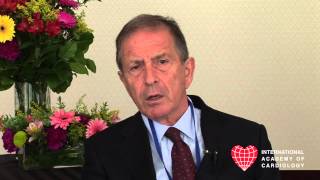
Uri Elkayam, M.D., University of Southern California, Keck School of Medicine, Los Angeles, CA, USA
Volume overload leading to both hemodynamic and symptomatic congestion is the cause for hospitalizations in the majority of cases with heart failure (HF). Ultrafiltration (UF) has been traditionally used for removal of volume in patients with diuretics resistance and those who need removal of a large volume. MORE» |
USE OF NMR LDL LIPOPROTEIN PARTICLE ANALYSIS IN CARDIOVASCULAR DISEASE PREVENTION

Stephen L. Kopecky, M.D., Mayo Clinic, Rochester, MN, USA
Low density lipoprotein particle counts, assessed by NMR technology, is available and is a valuable adjunct to the standard lipid profile normally used in lipid management. This technology is most useful in the following 3 settings: MORE»
|
DEVICE CLOSURE OF ASD- LONG-TERM FOLLOW UP WITH SPECIAL REFERENCE TO COMPLICATIONS 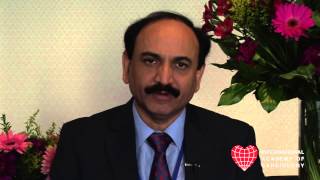
Masood Sadiq, M.D., The Childrens Hospital, Punjab Institute of Cardiology, Lahore, Pakistan
Device closure of ASD is now standard of treatment for suitable defects. There are however concerns over long-term outcome of device closure with special reference to complications mainly erosions and aortic regurgitation. The long term data is now available. MORE» |
CORONARY ARTERY CALCIUM DENSITY AND CARDIOVASCULAR DISEASE EVENTS
Michael H. Criqui, M.D., University of California, San Diego, La Jolla, CA, USA
Background: Coronary artery calcium (CAC) measured by computed tomography (CT) has strong predictive value for incident cardiovascular disease (CVD) events. The standard CAC score is the Agatston, which is weighted upward for greater calcium density. MORE» |
IS THERE A PERFECT APPROACH FOR ABLATION PERSISTENT ATRIAL FIBRILLATION? 
Komandoor Srivathsan, M.D., Mayo Clinic, AZ, USA
Ablation of paroxysmal atrial fibrillation that remains symptomatic despite tolerated antiarrhythmic medication is widely utilized with reasonable success. However, ablative approach in persistent atrial fibrillation remains unclear. Pulmonary vein isolation remains the cornerstone but what additional procedures need to be done to enhance the poor success rate remains inconclusive. MORE» |
ANY DEGREE OF MITRAL REGURGITATION FOUND DURING INVASIVE VENTRICULOGRAPHY IS ASSOCIATED WITH ALL CAUSE MORTALITY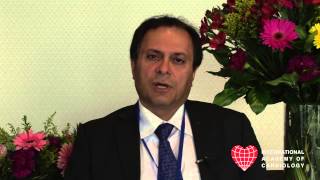
Mohammad R. Movahed, M.D., PhD., Arizona, USA
Background: Using a large data base of patients who underwent coronary angiography for clinical reason, we evaluated association between reported degree of mitral regurgitation (MR) with all-cause mortality. MORE»
|
CATECHOLAMINERGIC POLYMORPHIC VENTRICULAR TACHYCARDIA: THE CLINICIAN'S PERSPECTIVE

Martin J. LaPage, M.D., Michigan, USA
Catecholaminergic polymorphic polymorphic ventricular tachycardia (CPVT) is a potentially lethal, genetic channelopathy syndrome characterized by ventricular arrhythmias occurring primarily during exercise. Patients typically present with syncope or seizures and initial misdiagnosis is common because baseline cardiac testing is normal. MORE» |
MICROBIOTA, SYSTEMIC INFLAMMATION AND CARDIOVASCULAR FUNCTION
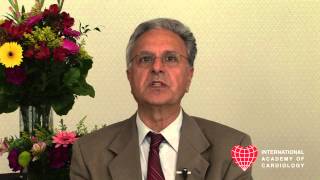
Mohamad Navab, Ph.D., David Geffen School of Medicine, University of California Los Angeles, CA, USA
Inflammation contributes to different degrees to most if not all pathological conditions. The GI system including small intestine plays a major role in systemic inflammation and thus cardiovascular well being. MORE» |
LEFT ATRIAL APPENDAGE CLOSURE 
Stefan C. Bertog, M.D., CardioVascular Center, Frankfurt, Germany
Atrial fibrillation is a frequent cause of stroke. The mechanism in non-valvular atrial fibrillation is thrombus formation in the left atrium. Ninety percent of left atrial thrombi occur in the left atrial appendage. MORE»
|
HIGH SENSITIVITY TROPONINS: A STEP FORWARD OR AN UNREQUESTED COMPLICATION?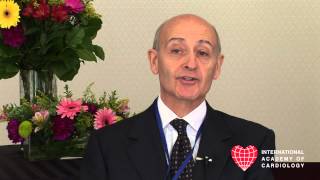
Luigi M. Biasucci, M.D., Catholic University of the Sacred Heart Largo, Rome, Italy
Progressive improvement in the analytical sensitivity of troponin (cTn) assays has led to a more rapid diagnosis of AMI and improved risk stratification in patients with NSTE-ACS, several authors have found that hs-troponin allow a faster and more accurate diagnosis of myocardial infarction (AMI), allowing detection of almost all MI in the first 3 to 6 hours. MORE»
|
THORACOSCOPIC BIATRIAL MAZE PROCEDURE – A NOVEL MINIMAL-INVASIVE REMEDY WITH PROMISING MIDTERM RESULTS
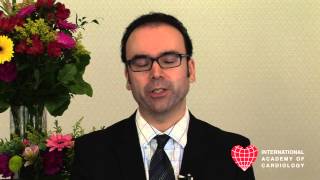
Ali Khoynezhad, M.D., Ph.D., Cedars-Sinai Medical Center, Los Angeles, CA, USA
Minimal Access atrial fibrillation has undergone significant progression in last few years. The lesion set has progressed from simple pulmonary vein (PV) isolation to a more comprehensive lesion set, which can be placed epicardially, and more closely replicates the left atrial lesions of the Cox maze III. Less-invasive access has progressed from bilateral mini thoracotomies initially described by Wolf and coworkers, to a totally thorascopic approach initially described by Puskas and coworkers. MORE» |
USE OF AMBULATORY BLOOD PRESSURE MONITOR (ABPM) FOR GUIDING CARDIAC PATIENTS MANAGEMENT
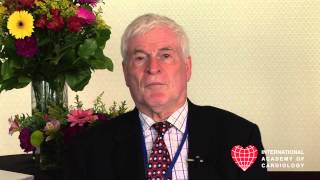
Yzhar Charuzi, M.D., UCLA School of Medicine, CA, USA
24-hours ambulatory blood pressure monitoring has been for years a useful tool to assess variability in blood pressure beyond office checks or self-measurement. We decided to investigate the impact of ABPMs on patient management. The common indication for applying the test was uncertainty of BP fluctuations over a course of 24 hours. MORE»
|
SCREENING FOR ASYMPTOMATIC CORONARY ARTERY DISEASE: SEEKING VALUE IN A MULTI-MODALITY WORLD

John J. Mahmarian, M.D., Methodist DeBakey Heart & Vascular Center, The Methodist Hospital, Houston, TX, USA
There are multiple potential candidate testing modalities for evaluating patients at risk for coronary artery disease (CAD) which include stress ECG testing; stress echocardiography and myocardial perfusion imaging (MPI); and cardiac computed tomography (CT). Stress echocardiography and MPI are considered inappropriate in low and intermediate risk patients but may have value in patients at high CAD risk. MORE»
|
CVD IN WOMEN: A FRESH PERSPECTIVE
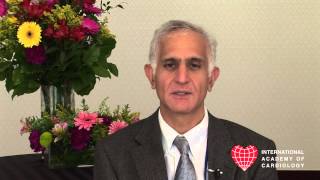
Amir Kazory, M.D., University of Florida, Gainesville, FL, USA
While peritoneal dialysis is an established therapy for management of patients with end stage renal disease, it has also been proposed as a means of fluid and sodium extraction in patients with heart failure and volume overload. A number of studies have used this therapeutic modality in various settings and have generally reported positive results. MORE»
|
THE ROLE OF NITRIC OXIDE/PEROXYNITRITE IMBALANCE IN THE ISCHEMIC HEART

Tadeusz Malinski, Ph.D., Ohio University, Ohio, USA
Background: The functional endothelial cells are the main source of nitric oxide (NO) in the heart. NO release in the beating heart is stimulated by mechanical forces during systole and diastole. NO release can be also stimulated in the heart by chemical pathways, i.e. epinephrine. MORE»
|
ANTICOAGULATION AND HEART VALVE DISEASE: IS IT TIME TO RECONSIDER WHO AND HOW?
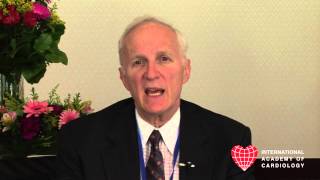
Jeffrey S. Borer, M.D., New York, USA
Intra cardiac thrombosis and thromboembolism long have been associated with heart valve diseases (VHD). However, except when atrial fibrillation (AF) coincides with VHD, anticoagulation seldom is considered unless a valve has been replaced, particularly with a mechanical prosthesis. MORE»
|
BIVENTRICULAR PACING FOR ATRIOVENTRICULAR BLOCK AND SYSTOLIC DYSFUNCTION

Anne B. Curtis, M.D., Buffalo, New York, USA
Background: Right ventricular pacing restores an adequate heart rate in patients with atrioventricular block, but high percentages of right ventricular apical pacing may promote left ventricular systolic dysfunction. We evaluated whether biventricular pacing might reduce mortality, morbidity, and adverse left ventricular remodeling in such patients. MORE»
|
REVERSAL OF CARDIAC REMODELING IN HEART FAILURE BY ALPHA-ADRENOCEPTOR BLOCKADE
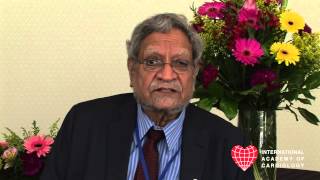
Naranjan S. Dhalla, Ph.D, M.D., MB, University of Manitoba, Winnipeg, Manitoba, Canada
In view of the role of elevated levels of circulating catecholamines, the activation of both alpha-adrenoceptor (AR) and beta-AR is considered to play a critical role in the pathogenesis of heart failure. Previous studies have shown the beneficial effects of beta-AR blockade in the failing heart; however, very little information on the action of alpha-AR blockade is available. MORE»
|
ALDOSTERONE - A BRIDGE BETWEEN CARDIOVASCULAR AND MOOD DISORDERS?

Daniela Jezova, M.D., Institute of Experimental Endocrinology, Slovak Academy of Sciences, Bratislava, Slovak Republic
Aldosterone is the main mineralocorticoid hormone involved in the control of blood volume. Its effects on water-electrolyte homeostasis have impact on the control of blood pressure and cardiovascular functions. It is well known that the comorbidity of cardiovascular and mental disorder is high, however, aldosterone has not been implicated in the psychopathology so far. MORE»
|
DUAL RENIN-ANGIOTENSIN-ALDOSTERONE SYSTEM INHIBITION: TOO MUCH OF A GOOD THING?
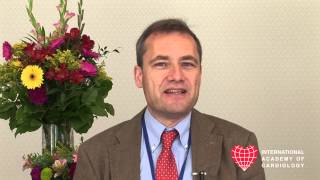
A.H. Jan Danser, Erasmus MC, Rotterdam, The Netherlands
The beneficial effects of ACE inhibitors (ACEi) and AT1 receptor blockers (ARBs) are due to blockade of tissue Ang II. Such blockade is often incomplete, due to activation of feedback mechanisms within the RAS (‘Ang II escape’). MORE» |
SURGICAL TIMING FOR INFECTIVE ENDOCARDITIS

Duk-Hyun Kang, M.D., Asan Medical Center, Seoul, South Korea
Despite advances in medical and surgical treatment, infective endocarditis (IE) remains a serious disease that carries considerable mortality and morbidity. The role of surgery has been expanding in IE and early surgery is strongly indicated for IE patients with congestive heart failure or uncontrolled infection, but no randomized trial has been conducted to clarify the indications and optimal timing of surgery because of ethical, logistical and financial constraints. MORE» |
USE OF AMBULATORY BLOOD PRESSURE MONITOR (ABPM) FOR GUIDING CARDIAC PATIENTS MANAGEMENT

Yzhar Charuzi, M.D., UCLA School of Medicine, CA, USA
24-hours ambulatory blood pressure monitoring has been for years a useful tool to assess variability in blood pressure beyond office checks or self-measurement. We decided to investigate the impact of ABPMs on patient management. The common indication for applying the test was uncertainty of BP fluctuations over a course of 24 hours. MORE»
|
SCREENING FOR ASYMPTOMATIC CORONARY ARTERY DISEASE: SEEKING VALUE IN A MULTI-MODALITY WORLD

John J. Mahmarian, M.D., Methodist DeBakey Heart & Vascular Center, The Methodist Hospital, Houston, TX, USA
There are multiple potential candidate testing modalities for evaluating patients at risk for coronary artery disease (CAD) which include stress ECG testing; stress echocardiography and myocardial perfusion imaging (MPI); and cardiac computed tomography (CT). Stress echocardiography and MPI are considered inappropriate in low and intermediate risk patients but may have value in patients at high CAD risk. MORE»
|
|
|
|
CARDIOLOGY ONLINE NEWS |
 |
| 18th WORLD CONGRESS ON HEART DISEASE |
|
INFLAMMATION - THE NEW TARGET FOR PREVENTION OF CORONARY ARTERY DISEASE
 Robert Roberts, M.D., University of Ottawa Heart Institute, ON, Canada Robert Roberts, M.D., University of Ottawa Heart Institute, ON, Canada
New Technology that evolved in 2005 made it possible to genotype the whole human genome sequence utilizing a million DNA markers in the form of single nucleotide polymorphisms (SNPs). This led to the first genome-wide association study (GWAS) in pursuit of the genes for coronary artery disease (CAD). MORE» |
PRACTICAL GENETICS OF THORACIC AORTIC ANEURYSM
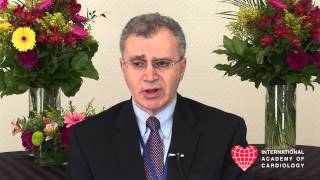
John A. Elefteriades, M.D., Aortic Institute at Yale-New Haven, CT, USA
The discovery of the genetics of thoracic aortic aneurysm dates back to observations by Hippocrates in 400 BC. The contributions of Marfan, Ehler, and Danlos are well-appreciated. Another germinal advance was the recognition in 1981 by M. David Tilson at Yale that abdominal aortic aneurysm runs in families. MORE» |
SEX DIFFERENCES IN CARDIOVASCULAR DISEASE
 Vera Regitz-Zagrosek, M.D., Center for Cardiovascular Research, Berlin, Germany Vera Regitz-Zagrosek, M.D., Center for Cardiovascular Research, Berlin, Germany
Sex differences affect the presentation, treatment results, and outcomes of cardiovascular diseases. Men suffer at younger ages than women from coronary artery disease and hypertension and more commonly develop systolic heart failure or aortic aneurysms. Women are more frequently affected by heart failure with preserved ejection fraction, long QT-syndromes and Tako-tsubo cardiomyopathy. MORE» |
CPT1b DEFICIENCY IS BAD FOR THE HYPERTROPHIED HEART

Qinglin Yang, M.D., University of Alabama at Birmingham, AL, USA
Objective: To investigate the effect of Carnitine palmitoyltransferase 1b (CPT1b) deficiency on pressure overload-induced cardiac hypertrophy. Background: CPT1 is a rate-limiting step of mitochondrial ß-oxidation by controlling the mitochondrial uptake of long-chain acyl-CoAs. MORE» |
IS DIABETES REALLY A CORONARY HEART DISEASE RISK EQUIVALENT?
 Nathan D. Wong, Ph.D., University of California, Irvine, CA, USA Nathan D. Wong, Ph.D., University of California, Irvine, CA, USA
Type 2 diabetes (T2DM) is associated with substantial increases in morbidity and mortality from coronary heart disease (CHD) and has been considered a CHD risk equivalent by the US National Cholesterol Education Program. The East-West Study originally showed persons with diabetes but no prior myocardial infarction had a similar risk of future CHD events as those with a prior myocardial infarction and no diabetes. MORE» |
INTERACTION OF GENE AND SALT DIETS ON CARDIAC ANGIOTENSIN II, ALDOSTERONE, AND CYTOKINES IN HYPERTROPHIED HEART

Kailash N. Pandey, Ph.D., Tulane University School of Medicine, LA, USA
The objective of the present study was to elucidate the interactive roles of guanylyl cyclase/natriuretic peptide receptor-A (GC-A/NPRA) gene (Npr1) and salt diets on cardiac angiotensin II (ANG II), aldosterone (ALDO), and pro-inflammatory cytokines in hypertrophied hearts. Npr1 genotypes included gene-disrupted heterozygous (+/-; 1-copy), wild-type (+/+; 2-copy), gene-duplicated heterozygous (++/+; 3-copy), and gene-duplicated homozygous (++/++; 4-copy) mice. Animals were fed with low, normal, and high salt-diets. MORE»
|
PERSONALIZED MEDICINE IN DILATED CARDIOMYOPATHY
 Luisa Mestroni, M.D., University of Colorado, CO, USA Luisa Mestroni, M.D., University of Colorado, CO, USA
Clinical genetic testing is becoming more mainstream in inherited disorders, such as cardiomyopathies. At the same time, newer DNA sequencing technology can now complete the sequencing of an entire human genome several times over in a matter of days, in an efficient and cost effective manner. However, the extent of remarkable genetic variation is increasingly being appreciated and this undoubtedly adds new challenges to the difficulty of distinguishing true pathogenetic variants from benign variants in diagnostic genetics and in the research setting. MORE»
|
MITOCHONDRIAL FISSION AND FUSION IN HEART FAILURE
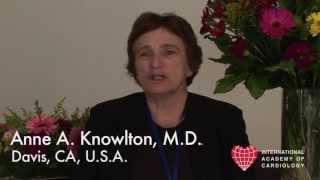
Anne A. Knowlton, M.D., University of California, Davis, CA, USA
Mitochondrial fusion and fission are essential processes for preservation of normal mitochondrial function. OPA1, a mitochondrial fusion protein, is decreased in both human and rat failing hearts. A number of inherited neuropathies are associated with mutation of fission/fusion proteins, including Charcot-Marie-Tooth (CMT) disease. MORE»
|
NEW INSIGHT INTO TREATMENT OF AORTIC STENOSIS: LIGHT AT THE END OF THE TUNNEL
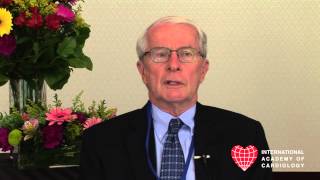 Donald D. Heistad, M.D., University of Iowa, IA, USA Donald D. Heistad, M.D., University of Iowa, IA, USA
No medical therapy for fibro-calcific aortic valve stenosis (FCAVS) is effective. We have developed experimental models of severe FCAVS in mice, and are using these models to examine interventions that may be useful in slowing the development or progression of FCAVS. MORE» |
CAROTID ULTRASOUND EVALUATION OF SUBCLINICAL ATHEROSCLEROSIS IN 2013: PROGRESS AND PITFALLS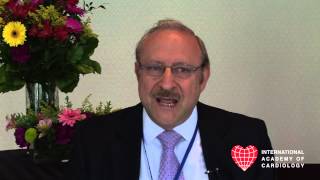 Julius M. Gardin, M.D., Hackensack University Medical Center, NJ, USA Julius M. Gardin, M.D., Hackensack University Medical Center, NJ, USA
Carotid artery ultrasound intima-medial thickness (IMT) measurements are reported to add predictive value to traditional risk factors for predicting myocardial infarction and stroke. Recently, we reported that the Lifetime Risk algorithm was superior to both 10-year and 30-year Framingham Risk Score (FRS) algorithms in assigning subjects with carotid or femoral plaques to the high-risk FRS category for women aged 20-to-60 years and for men aged =50 years. MORE»
|
PREVENTION OF REPERFUSION INJURY IN PATIENTS WITH ST ELEVATION MYOCARDIAL INFARCTION: THE CGMP PATHWAY
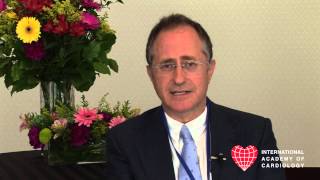 David Garcia-Dorado, M.D., Ph.D., Vall d'Hebron University Hospital, Barcelona, Spain David Garcia-Dorado, M.D., Ph.D., Vall d'Hebron University Hospital, Barcelona, Spain
Despite standard-of-the-art reperfusión therapy, most patients with ST elevation myocardial infarction (STEMI) present significant myocardial necrosis, and many of them experience adverse left ventricular remodeling and adverse outcomes. Coadjuvant therapies able to limit necrosis in these patients by reducing reperfusion injury are thus of great potential clinical interest. MORE» |
IMPACT OF DENERVATED MYOCARDIUM ON IMPROVING RISK STRATIFICATION FOR SUDDEN CARDIAC DEATH

Michael E. Cain, M.D., University at Buffalo, NY, USA
The annual incidence of sudden cardiac death in the United States is between 184,000 and 462,000, with estimates that 50% to 70% of the deaths are due to VT or VF. Availability of therapies shown to reduce death in various at-risk groups, including beta-blockers, ACE- inhibitors, statins, aldosterone blockers, and the implantable cardiac defibrillator (ICD), underscore the need to accurately identify patients who will develop VT/VF and exclude those who will not. MORE» |
DIHYDROFOLATE REDUCTASE IN CARDIOVASCULAR PATHOPHYSIOLOGY
(click on the photo to view the video)
 Linda Cai, M.D., Ph.D., UCLA David Geffen School of Medicine, CA, USA Linda Cai, M.D., Ph.D., UCLA David Geffen School of Medicine, CA, USA
It has become clear during the past decade that endothelial nitric oxide synthase (eNOS) can transform into a superoxide-generating/pro-oxidant enzyme, when its essential cofactor tetrahydrobiopterin (H4B) becomes deficient. This phenomenon is now referred to as eNOS uncoupling. MORE» |
NOVEL USES OF CARDIAC MRI FOR NON-ISCHEMIC HEART DISEASE
 Robert W. W. Biederman, M.D., Carnegie Mellon University, PA, USA Robert W. W. Biederman, M.D., Carnegie Mellon University, PA, USA
While the evaluation of ischemic cardiomyopathy (ICMX) has been well defined via Cardiovascular MRI (CMR), less is understood how the application of similar approaches can be incorporated for the identification non-ischemic cardiomyopathy (NICMX), often defining many obscure diagnoses. The utility for accurate, rapid, inexpensive and robust technique not requiring biopsy confirmation has particular value in the armamentarium of informed clinicians. MORE» |
ENHANCING GLUCOSE OXIDATION AS AN APPROACH TO TREAT 403 HEART FAILURE
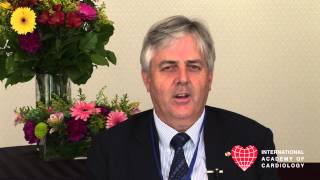
Gary Lopaschuk, Ph.D., University of Alberta, Edmonton, AB, Canada
Alterations in cardiac energy metabolism contribute to the impaired heart function observed in heart failure patients. The failing heart is both energy compromised, as well as inefficient at producing energy. MORE» |
THE HIGH CORONARY DISEASE RISK OF SOUTH ASIAN AMERICANS

Arthur L. Klatsky, M.D., Kaiser Permanente Medical Center, Oakland, CA, USA
Objective and Background: Prevalence data and case-control studies suggest high coronary artery disease (CAD) risk in South Asians (SA) but prospective studies remain sparse. We performed a comprehensive prospective analysis in a large population. MORE» |
LOW INCOME IS AN INDEPENDENT PREDICTOR OF IN-HOSPITAL MORTALITY AMONG HEART TRANSPLANT RECIPIENTS: A NATIONWIDE INPATIENT SAMPLE STUDY
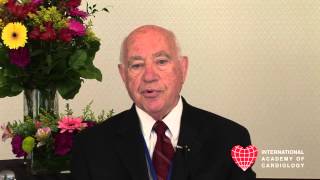
Wilbert S. Aronow, M.D., New York Medical College, NY, U.S.A.
Lower socio-economic condition has been shown to have greater risk of rejection and graft loss among heart transplant recipients who survive the transplant hospitalization. However, the association of income status and in-hospital outcomes among heart transplant recipients have not been studied from a national database. MORE» |
CVD IN WOMEN: A FRESH PERSPECTIVE

Ezra A. Amsterdam, M.D., University of California, Davis, CA, USA
Recognition that cardiovascular disease is the leading cause of mortality in women has stimulated major interest and improvement in the detection, prevention, and treatment of CVD in women. Certain aspects of this subject require further clarification and will be considered in this presentation. MORE» |
USEFULNESS OF OPTICAL COHERENCE TOMOGRAPHY IN DAILY CLINICAL PRACTICE

Takashi Akasaka, M.D., Ph.D., Wakayama Medical University, Wakayama, Japan
Recently developed frequency-domain optical coherence tomography (FD-OCT) allow us to obtain 75mm length of high resolution intravascular image (10-20 micrometer) within 3 sec during contrast injection through a guiding catheter. This FD-OCT demonstrates the pathophysiology of the coronary atherosclerosis including vulnerable plaques with thin cap fibroatheroma (TCFA) in vivo before percutaneous intervention (PCI). MORE»
|
NEW STRATEGIES FOR ACUTE STROKE INTERVENTION

Horst Sievert, M.D., CardioVascular Center Frankfurt, Frankfurt, Germany
Stroke is the third leading cause of death and leading cause of disability in western countries. Though progress has been made in acute stroke intervention with the use of intravenous thrombolytic therapy, a large number of patients remain significantly disabled despite thrombolysis. MORE» |
OPTICAL COHERENCE TOMOGRAPHY (OCT): WHAT YOU NEED TO KNOW
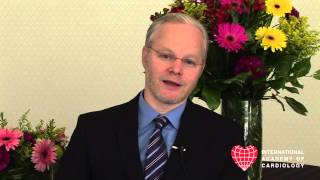
Joel A. Garcia, M.D., Denver Health Medical Center (DHMC) and University of Colorado Hospital at Denver, Denver, CO, USA
Objectives: Understanding the technical aspects of Optical Coherence Tomography (OCT) as they apply to daily clinical practice and comparing OCT images and acquisitions to intra-vascular ultrasound (IVUS). MORE»
|
THE COMPLICATED STEMI: WHAT TO DO WITH MULTIVESSEL DISEASE

Gregory W. Barsness, M.D., Mayo Clinic, Rochester, MN, USA
Primary PCI is the treatment of choice for the majority of patients presenting with myocardial infarction. In many instances, the choice of revascularization strategy is complicated by the presence of multivessel disease, especially in the presence of additional comorbidities, chronic total occlusions and, infrequently, hemodynamic or electrical instability. MORE» |
PTEN AND STATINS INDUCED NEW ONSET DIABETES
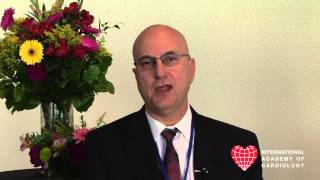
Yochai Birnbaum, M.D., Baylor College of Medicine, Houston, TX, USA
Background: High-dose statin therapy increases the incidence of new-onset diabetes. Studies in animal models have suggested that prolonged statin therapy upregulates Phosphatase and Tensin Homologue on Chromosome 10 (PTEN) expression. PTEN levels are also elevated in the heart, aorta and skeletal muscles of animals with diabetes, as well as the myocardium of diabetic patients. MORE» |
MAJOR NON-CARDIAC SURGERY IN PATIENTS WITH AORTIC STENOSIS - SAME AS 20 YEARS AGO?

Sorin Pislaru, M.D., Ph.D., Mayo Clinic College of Medicine, Rochester, MN, USA
Severe aortic stenosis has been long recognized as a risk factor for perioperative mortality and morbidity. Current ACC/AHA Guidelines recommend that elective noncardiac surgery be postponed for AS patients until after aortic valve surgery, due to an estimated mortality risk of noncardiac surgery at approximately 10%. MORE»
|
FAILURE TO OVEREXPRESS UROCORTIN FOLLOWING CARDIOPLEGIC ARREST MAKES THE HEART OF DIABETIC PATIENTS UNDERGOING ON-PUMP CORONARY ARTERY BYPASS GRAFTING MORE SUSCEPTIBLE TO APOPTOSIS AND CARDIAC DYSFUNCTION

Tiziano M. Scarabelli, M.D., St John Hospital & Medical Center/Wayne State University SOM, Detroit, MI, USA
Background. Molecular mechanisms responsible for the reported worse outcome of diabetic patients (DMP) after on-pump cardiac surgery (OPCS) remain unknown. Opposite effects have been reported for Urocortin (Ucn)/PKCe and PKCd, the former being cardio-protective and the latter pro-apoptotic. MORE»
|
BEYOND HDL CHOLESTEROL: WHAT CAN WE LEARN FROM HDL PARTICLE NUMBER AND SIZE?

Samia Mora, M.D., Brigham and Women's Hospital, Boston, MA, USA
Given the consistent inverse association of HDL cholesterol (HDL-C) with cardiovascular disease (CVD), there is immense interest in developing therapies that raise HDL-C. But HDL-C, the cholesterol carried by HDL particles, may not fully capture HDL-related cardioprotection. MORE» |
THE ASSOCIATION BETWEEN DEPRESSION AND DIABETES

Elizabeth Barrett-Connor, M.D., UCSD Dept. of Family and Preventive Medicine, La Jolla, CA, USA
Depression increases the risk of mortality, shown in a 12-year follow-up of 10,025 U.S. NHANES adults (Egede LE, Diabetes Care, 2005). Because both diabetes and depression are common, there is considerable overlap by chance alone; a diagnosis of both is most likely to be made in hospitalized patients (Berkson’s bias). MORE» |
CALIFORNIA REVASCULARIZATION: PCI OUTCOMES IN THE SUNSHINE STATE

William J. Bommer, M.D., University of California Davis, Medical Center, Davis, CA, USA
Introduction: In California (CA), 141 hospitals perform percutaneous coronary intervention (PCI) with 122 hospitals reporting to the NCDR® CathPCI registry. Objective: To evaluate the PCI volume and composite event outcomes in hospitals with surgery On-site versus hospitals with surgery Off-site in CA. MORE»
|
HDL AND THE ATHEROSCLEROSIS - MYTH OR REALITY

Robert S. Rosenson, M.D., Mount Sinai Heart Mount Sinai School of Medicine, New York, NY, USA
Low HDL cholesterol (HDL-C) is an established biomarker for the future development of atherosclerosis and atherosclerotic cardiovascular disease (CVD) events in population-based observational studies and clinical trials of cholesterol-lowering therapies and this includes coronary heart disease (CHD) patients with low levels of LDL cholesterol (LDL-C) on statin therapy. MORE» |
CARDIAC TISSUE HYPOTHYROIDISM- A MAJOR PLAYER IN DIABETIC CARDIOMYOPATHY

A. Martin Gerdes, M.D., N.Y. Weltman, New York Institute of Technology, Old Westbury, NY, USA
Objectives and Background: Thyroid dysfunction is common in individuals with diabetes mellitus (DM) and may contribute to the associated cardiac dysfunction. However, little is known about the extent and pathophysiological consequences of low thyroid conditions on the heart in DM. MORE» |
OXIDATIVE-MECHANICAL SIGNALING ACTIVATES Wnt3a-Lrp5 MEDIATED AORTIC VALVE OSTEOGENESIS IN BICUSPID AORTIC VALVE DISEASE

Nalini M. Rajamannan, M.D., Northwestern University Feinberg School of Medicine, Chicago, IL, USA
Introduction: Calcific aortic valve disease (CAVD) is the most common indication for valve surgery in the USA. Cellular mechanisms are under intense investigation. This study hypothesizes that calcific aortic valve disease develops secondary to Wnt3a/Lrp5 activation via oxidative- mechanical stress via a tissue stem cell niche resident in the aortic valve. MORE» |
FEMORAL OR RADIAL ACCESS FOR PRIMARY PCI: A DILEMMA OF CHOICE
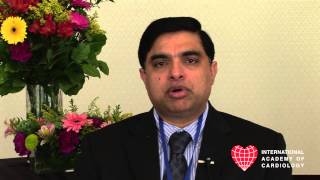
Asim N. Cheema, M.D., St. Michael's Hospital, Toronto, ON, Canada
Several studies have shown significant reduction in bleeding and vascular complications with transradial percutaneous coronary intervention (PCI) compared to a transfemoral approach. More recently, data from RIVAL and RIFLE-STEACS studies have suggested a mortality benefit in favor of transradial approach for patients undergoing PCI for ST elevation myocardial infarction (STEMI). MORE» |
TRENDS IN MANAGEMENT AND OUTCOME OF PATIENTS WITH ACUTE CORONARY SYNDROMES IN THE LAST DECADE: THE ACS ISRAELI SURVEY (ACSIS) EXPERIENCE
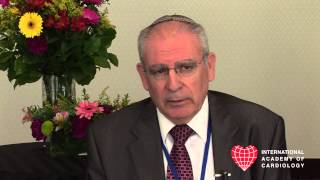
Shmuel Gottlieb, M.D., Jerusalem, Israel
Background: The management of acute coronary syndromes (ACS) patients has undergone major changes during the last decade. These changes reflect the results of numerous controlled clinical trials that established the basis for evidence-based guidelines. MORE» |
NON-INVASIVE CARDIOVASCULAR IMAGING FOR EVALUATION OF CORONARY ARTERY BYPASS GRAFT DISEASE

Abdou Elhendy, M.D., Ph.D, Department of Cardiology, Marshfield Clinic, Marshfield, WI, USA
Coronary artery bypass graft (CABG) surgery is a widely used method of revascularization in patients with severe coronary artery disease (CAD). Various studies have shown improvement of survival and cardiac symtoms after CABG, particularly in patients with low ejection fraction and multivessel CAD. MORE» |
ADVANCES IN PATHOPHYSIOLOGY AND MANAGEMENT OF DIASTOLIC HEART FAILURE
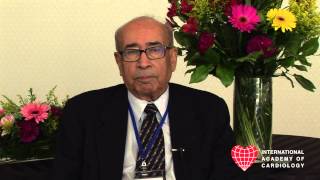
Kanu Chatterjee, M.B., FRCP, The Carver College of Medicine, University of Iowa, Iowa City, IA, USA
Diastolic heart failure is defined as asyndrome of heart failure with preserved ejection fraction (HFPREF). In diastolic heart failure, left ventricular wall thickness and mass is increased and the cavity size is normal. The mass/cavity ratio is increased. MORE» |
UPDATE ON THE TREATMENT OF LEFT MAIN DISEASE

Barry F. Uretsky, M.D., University of Arkansas for Medical Sciences, Little Rock, AR, USA
Percutaneous coronary intervention (PCI) with drug eluting stents (DES) has emerged as a treatment alternative with left main (LM) disease. Three randomized clinical trials (RCT) compared DES to coronary artery bypass surgery (CABG). MORE» |
INDICATIONS AND SURVIVAL OF 90 YEAR OLDS UNDERGOING CORONARY ANGIOGRAPHY
 Mandeep S. Sidhu, M.D., Albany Medical College, Albany, New York, USA Mandeep S. Sidhu, M.D., Albany Medical College, Albany, New York, USA
Background: The Elderly are the fastest growing segment of western population. 1 in 5 US Citizen will be elderly by the year 2030. Nonagenarians (>90 year old) are projected to grow to 18 million by the year 2050. MORE» |
FLURPIRIDAZ F 18 PET VERSUS TC-99M SPECT FOR MYOCARDIAL PERFUSION IMAGING

Daniel S. Berman, M.D., Cedars-Sinai Medical Center, Los Angeles, CA, USA
Flurpiridaz F-18, a new PET tracer for myocardial perfusion imaging has recently been studied in a Phase II trial. In pre-clinical and phase-I studies, flurpiridaz F-18 has shown essentially linear myocardial uptake throughout the range of flow. MORE» |


|